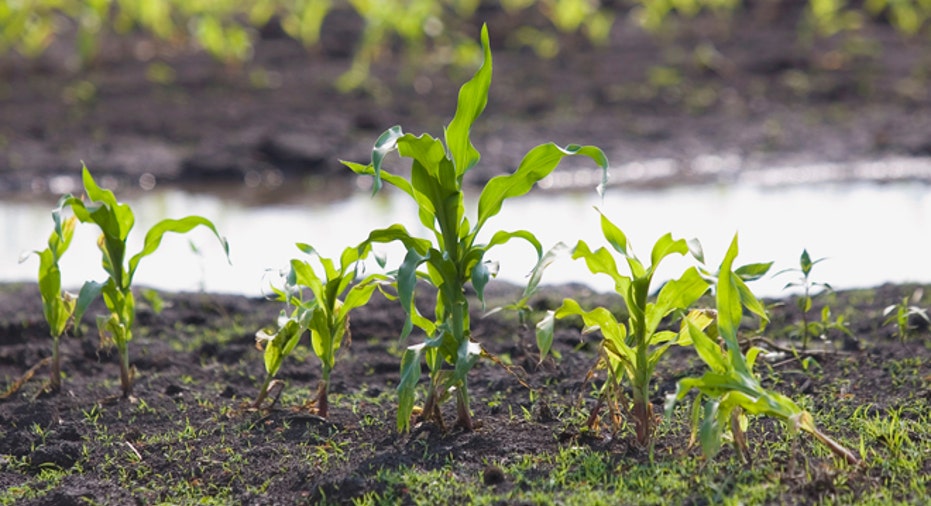U.S. Plains farmland values hold steady in second quarter -KC Fed

Farmland prices in the U.S. Plains and Corn Belt states were steady to higher in the second quarter despite lower grain profits as crop prices fell, according to Federal Reserve Bank quarterly surveys issued on Thursday.
Falling corn, soybean and wheat prices cut into crop farmers' profits while the livestock sector benefited from cheaper feed costs.
Along with lower incomes, bankers noted a sharp rise in loan demand, but overall credit conditions remained strong, the banks said.
"Farmland values were partly buoyed by a spring rally in corn and soybean prices, which occurred before these crop prices started falling again in May," said the Chicago Fed, citing a 2 percent rise from the previous quarter and a 3 percent increase from a year ago.
The Fed's Chicago district, which stretches from Iowa to Michigan, is the top corn, soybean and hog producing area of the United States.
Farmland prices are closely watched by Fed policymakers, ag lenders and farm suppliers - from equipment makers to seed dealers - since land is the basic collateral for most farm loans.
In recent years, crop and farmland prices have set records as a boom in biofuels and exports fueled demand. That ended last fall as U.S. grain stocks rebuilt after a record drought. But land auctions this spring have remained generally strong, easing bankers' fears about a potential "farmland bubble" popping after the boom.
"Despite continued strength in the livestock sector, district farm income remained well below year-ago levels due to falling crop prices and poor winter wheat yields. Cropland values generally held at high levels while strong demand for high-quality pasture pushed ranchland values higher," the Kansas City Fed said in its survey of 218 farm lenders in the central Plains - a major producer of wheat, corn, and cattle.
The KC Fed said non-irrigated and irrigated cropland values rose by less than 1 percent from the first quarter and were up 6 percent from a year earlier. Ranchland values were up more than 2 percent from the first quarter and up 9 percent from a year ago.
"Lower crop prices will eventually translate into some type of softening - we haven't gotten to that point," said Nathan Kauffman, KC Fed economist and one of the survey's authors.
Farmers still have a lot of wealth and continue to drive demand, Kauffman said.
Land values in the southern Midwest and mid-South - a grain, cotton and livestock region - did not hold up as well.
The St. Louis Fed said in its survey of 45 farm lenders cropland values were slightly lower in the quarter, down less than 1 percent from the first quarter and down 3.5 percent from a year ago.
Mid-South ranchland values fell 7.4 percent compared with the previous quarter and were down 2.5 percent from a year earlier.
However, cash rents rose 4.9 percent from the first quarter, with the average rent $191 per acre.